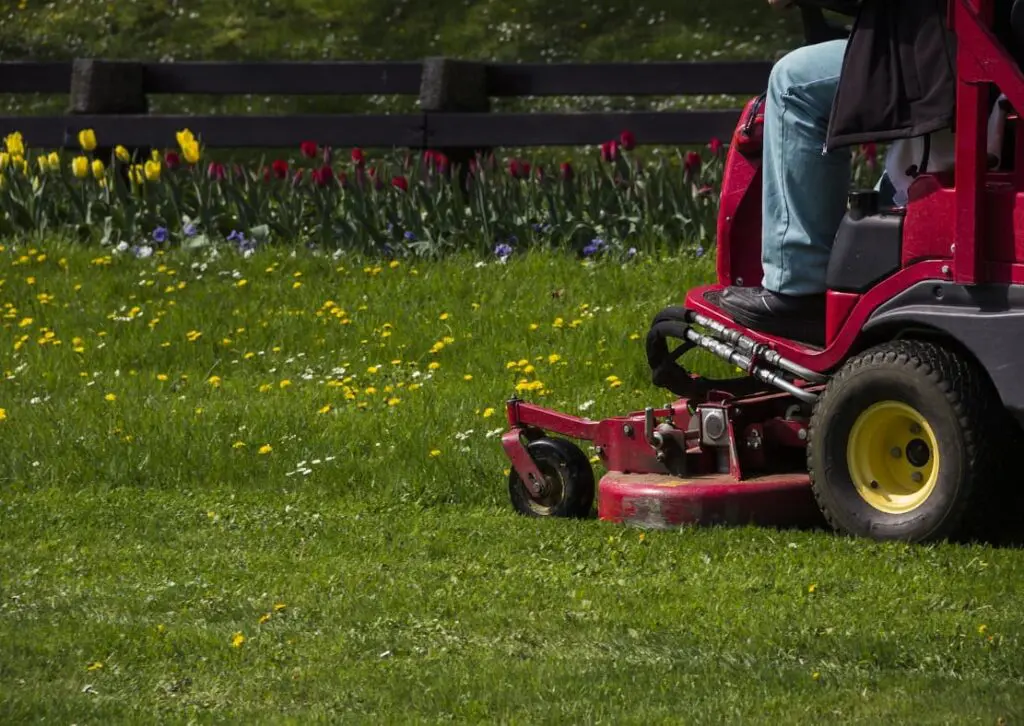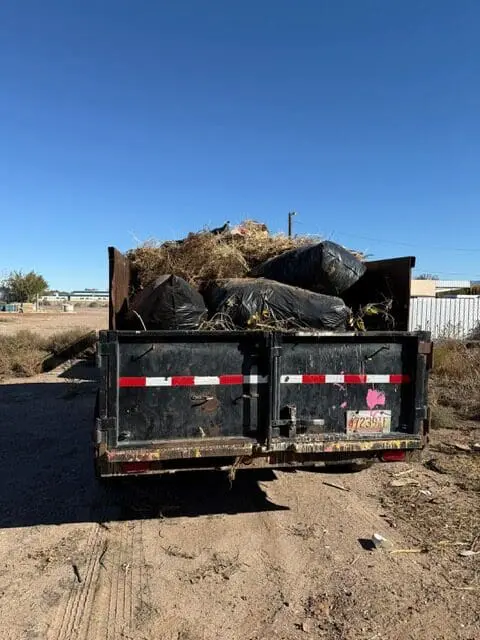When Is the Best Time of Year to Schedule Yard Clean Up?
 The itch to refresh your home can come on as soon as the first signs of spring do. But what about spring cleaning, for your yard, meaning serious yard clean up?
The itch to refresh your home can come on as soon as the first signs of spring do. But what about spring cleaning, for your yard, meaning serious yard clean up?
Your backyard or patio deserves the same care as your indoor space. Considering eco-friendliness as you look for ways to manage yard cleanup this spring. This guide is here to help you determine when to do spring yard cleanup, what to do, and how to do it step by step.
Why Do Yard Clean Up in the Spring?
Your yard is likely apocalyptic after winter full of dead plants, surfaces that are dull or dirty and debris that has been scattered.
Now clearing this out in the spring will make way for your future garden to grow, and create a tidy, relaxing space where you and your family can spend more time together during the warmest season of the year.
When Is the Best Time for Spring Yard Cleanup?
And while you might be eager to hit the ground running as soon as the mercury climbs, there are plenty of good reasons to wait for the sake of your yard’s health and the well-being of the broader ecosystem. It is best to wait until the temperature has been above 50 degrees F for several days.
Winter shelter for many pollinators is found underneath debris and under plants. Cleaning up these areas too soon can damage their populations — and, in turn, your yard and garden.
See how we can help gas your home from a source you can rely on. Learn about our dedication to power solutions.
Contact ASAP Sands Outdoor Services about its Albuquerque yard clean up service if you want to learn more.
Yard Cleanup Checklist
What does spring yard cleanup consist of? The following thorough checklist includes items that will help keep the process earth-friendly for your yard.
Clear Debris
You might have accumulated some branches and leaves in your yard over the winter. First things first: walk around the yard a little bit and pick all the organic clutter and debris around the area, making sure to check corners and right under larger plants.
Remove Weeds and Dead Foliage
Garden beds may be attended by invasive weeds and unwanted plants that have somehow managed to take root during late autumn or during the winter months.
You at might have to pull out some of the plants you already have, or at least some of their parts, to make room for the new growth. Opt for reusable garden bags instead of plastic to keep up your eco-conscious approach.
Mow the Grass
Your grass may be a mess from the winter, or it might be time to snip it back and make it more appealing looking. Once it’s warm enough, mowing the grass shorter than you’d mow it outside of the growing season is fine, down to an inch and a half.
Keep in mind that grass clippings are natural fertilizer for the grass in your lawn, so there’s no need to bag them after you’re done cutting. But if there are a lot of clippings or if the grass is too long, the clippings will dry out and leave more work for you to clean up.
Trim Shrubs and Trees
Thankfully, the best time to trim your trees and shrubs is early spring and late winter. It’s easier too, since you won’t have leaves in your way. Cutting just before new growth begins promotes healing, and also encourage new branches or limbs to have nutrients diverted to them.
Reseed the Grass
Pets, storms and foot traffic can take a toll on your lawn in the winter, in large part because it is not growing new blades of grass to fill in damaged areas. If you have cold-weather thin spots in your lawn, search your yard for such potential grass-seed-and-fertilizer spots and nurture the area while any seed emerges.
Clear Walkways
With any fallen leaves and other detritus, your sidewalks and patio areas may have gained a few new weed patches for company — plus dirt, mold and mildew, should you have lined these spots with pavers.
The hole can be cleared with a good yard weeding/ power wash, but you can also use a smidge of elbow grease to tend to super stubborn mold or mildew growth sans harsh chemicals. Dilute 2 tablespoons of detergent and 2 cups of bleach in 2 quarts of warm water, and use a scouring brush to apply to affected areas. Allow to act for 15 minutes, rinse thoroughly.
Check Sprinklers
If you water your lawn with a sprinkler system, this is a great time to De-winterize your sprinklers and make sure they’re in good working order. If possible bring out a lawn care professional to do a pre-planting inspection and system maintenance.
Prepare Garden Beds
No matter what you are hoping to grow, you need to start with a clean, nutritious base in order for your plants to thrive. Define and edge your garden beds and add rich soil and new mulch. Weed guard may also be placed in preparation for extra protection against weedy garden raiders.
Establish Pest Control
They burrow for bugs anywhere they can be out of site and near their food and water sources. Remove debris and strategize your yard layout to deter pests. This process can involve trimming overgrown foliage, treating potential harbourages and standing water. Keep mosquitoes in check in water features by killing larva with non-toxic Mosquito Dunks.
Make Repairs and Adjustments
Assets in your yard, such as fences, partitions or light fixtures, might have been damaged by winter storms or neighborhood creatures. If so, there’s no better time than now to fix them. This latter does the work in springtime to keep the hungry pests out of your garden. You can get these jobs done earlier in the season instead of waiting to do them beneath the hot sun of summer.
Clean Furniture
Your patio furniture probably could use a deep clean after the winter cooped up. Combine dish soap with warm water and use a scrub brush or washcloth for any metal or plastic furniture. After giving them a rinse, stand ’em up on their side for water to drain off the sides.
For wicker or rattan furniture, moisten a cloth with mild soap and warm water. Wipe away the surface while scrubbing a small brush into the grooves. Do not over-saturate the furniture as you rinse with the hose.
Tools for Spring Yard Cleanup
What’s a spring cleanup without a set of landscaping tools to help with the task? Make sure you’ve got these tools to assist with your next yard project:
- Lawnmower
- Soil aerator
- Pruning shears
- Pop-up garden bags
- Garden handsaw
- Rake
- Trowel and shovel
- Wheelbarrow
Keep in mind that you’re not limited with fancy tools or electric instruments to maintain the garden. For most yard work, you will do fine with manual tools that don’t need gas to run them.
If you rely on an electric tool, it is better to use an energy-efficient one or one with a rechargeable battery, to decrease your carbon footprint and make your work as earth-friendly as you can.
Keep Your Home Eco-Friendly
Getting your yard ready for spring can help make our planet, and your backyard, a better place. Once you’ve done a bit of spring cleaning for your outdoor spaces, there’s no need to restrict yourself to using eco-friendly methods only outside.

